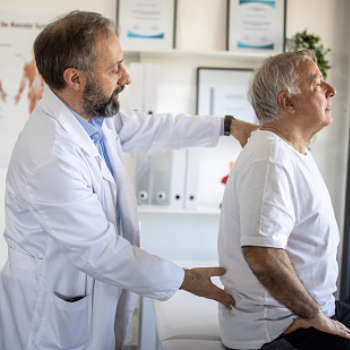Your neck and spine are responsible for controlling every movement you make, so a spinal injury or disease could significantly alter your day-to-day life—not to mention cause serious pain and discomfort.
Our team of orthopedic doctors are experts in providing the most modern and innovative, and least invasive, spinal procedures to restore your function and get you back to doing the things you love.
We encourage and coordinate non-operative care whenever possible. But when needed, we can perform the full range of spinal surgeries, including outpatient spine surgery, minimally invasive spine surgery, motion-sparing spine surgery, disc replacement, and many other advanced spine procedures. We are also equipped to perform complex revision surgeries when necessary, including spinal fusion and spinal deformity surgery.
Our team of spine surgeons are:
- Experts in the latest emerging techniques for neck and spine care, including alternatives to open surgery in some cases
- Specially trained in spinal orthopedic surgery
- Able to provide our patients with access to a sophisticated pain management and rehabilitation program designed to give you the best possible outcome
- Trained in the least invasive surgical options, including minimally invasive spinal surgery
Our multidisciplinary network is home to leaders in a wide range of specialty areas related to the neck and spine, such as physical therapy. Our doctors routinely coordinate continuing care on your behalf both during and after your spine surgery so you will have access to any other specialists you may need. Neck treatments and spine treatment services are located throughout the Washington DC, Baltimore, Maryland, and Virginia.
Depend on us for expert neck and spine care.
It’s time to stop letting neck or back pain keep you from doing the activities you love. Take our free spine health risk assessment by clicking on your preferred region (Central Maryland region or Washington, DC region) to determine your risk for spine issues and what we can do to help.
You don't have to live another day in pain.










